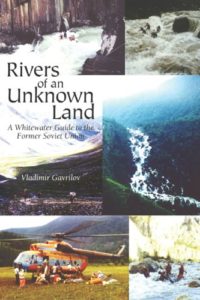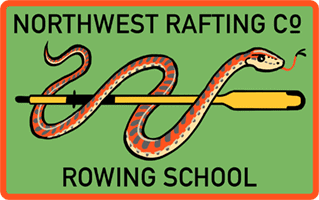Vlad's Whitewater Summer of 1987
Our video series about whitewater runs in the former Soviet Union in the 1980s draw significant interest and Zach offered to write a story about the trip in the Pamir mountains. This trip took place in September of 1987. But first, I would like to tell story about Shakhdara River trip: my long, very intense, and loaded with adventures season of 1987.
I will begin by stating that even by Russian standards I was a very lucky man in terms of longevity of my vacations. As a senior research fellow working with radiation in the Physics Institute I had very long vacations but of course it was my boss who valued my results and closed his eyes to my disappearance practically for the entire summer.
So I’ve began the season in Estonia with group of my colleagues. We rode dirt roads in forests of this tiny republic on bikes and then took a ferry to the small Baltic Sea islands Mukhu and Saarema. We biked around the islands, looking at windmills and old cabins. The trip took 7 days and we ran 500km (about 312 mi).
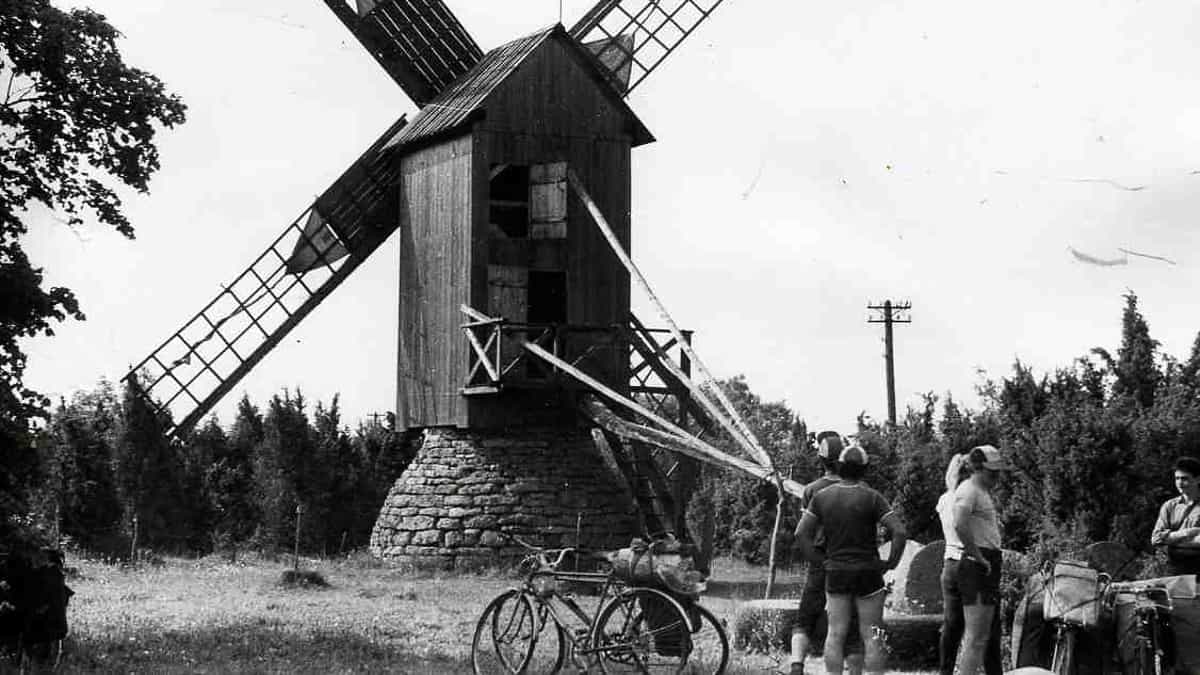
Cycling in Estonia
Up until August I worked in the laboratory, and at the beginning of the month I took a train from Riga to Moscow where my friend Boris and I met five friends from Ukraine city Khar’kov and then took another train for 4 day trip to Baikal Lake. For Westerners, a train trip in Russia is very special part of your adventure. Just recently I took my American guests from Novosibirsk to Lake Baikal. Immediately Bill grabbed the upper bunk bed because it is very special fun: you lay down on the bed and watch endless forests outside. In a short time he left and I found him outside of our compartment talking with some drunk Russian guys. I do not have any idea how they communicated but Bill and the Russians were happy.
In our case we did not have such problem. My Khar’kov friend and colleague Alex and I finished our discussion of our scientific results (we wrote an article about our research), while the rest of the group repaired equipment and played cards. Khar’kov guys were like a group of comedians and we had a great time all the way to Baikal Lake. At the end of the fourth day we reached Slyudyanka – a small town at the south shore of Baikal Lake. We unloaded our stuff in darkness, walked away from the station and found a nice grassy place not far from the shore. At morning we woke up at 5:30 AM to see the sunrise on Lake Baikal. It was super cold and very soon we found that half of us slept on the steps of a church and the second half at steps of local KGB department. We did not wait for the owners of these very respected organizations, took our 40kg (88lbs) backpacks and began our first very steep climb onto Khamar-Daban ridge.
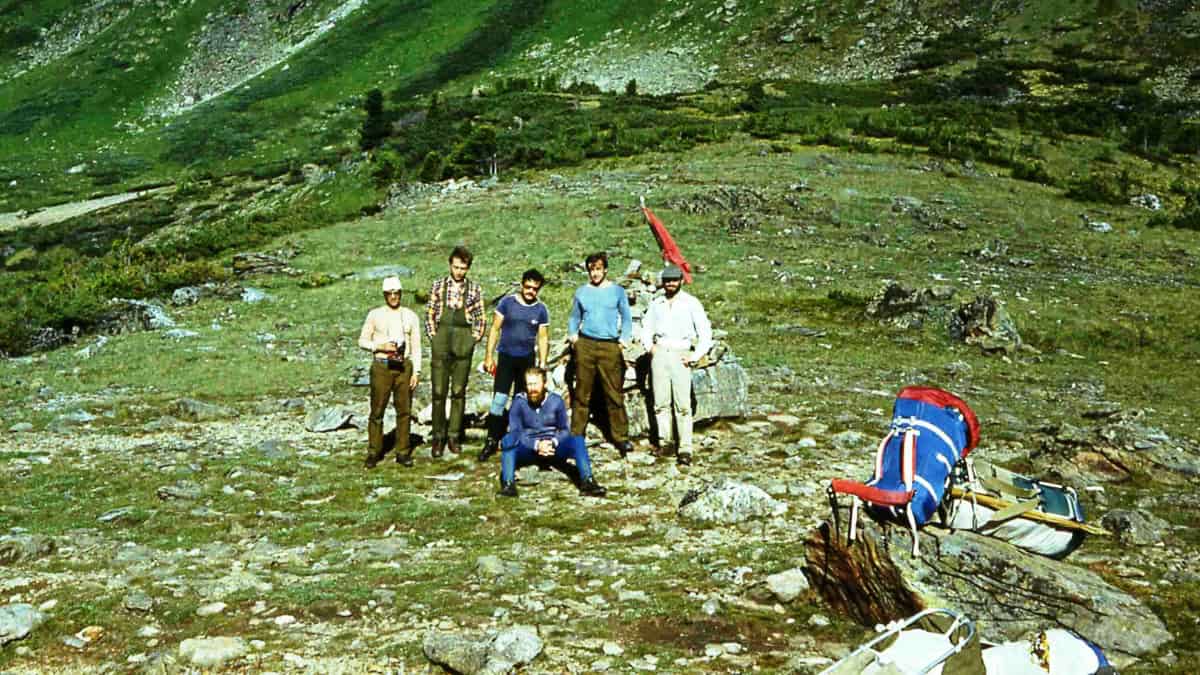
Crossing Devil's Gate en route to the Khara Murin
We had to go about 60km to the River Khara-Murin coming to Baikal from the South. Khamar-Daban is known as one of the most rainy areas of Siberia, but the first couple days we were lucky. We crossed several passes. The trail gradually becomes worse but still was visible. One should understand that it is not trail in Yosemite or even in Idaho wilderness. Siberian and Russian Forest Service do not care about its marking or quality. We met a group of hikers and they told us that this trail is Class 4 for hikers (of course they did not have 40kg on their shoulders). We forded couple rivers, they were super cold. The ford across Utulik river was also very deep and so cold actually that everything below our waists was frozen to the point of icicles. Under strong rain and losing a muddy trail every 30 minutes, we eventually reached Khara Murin river.
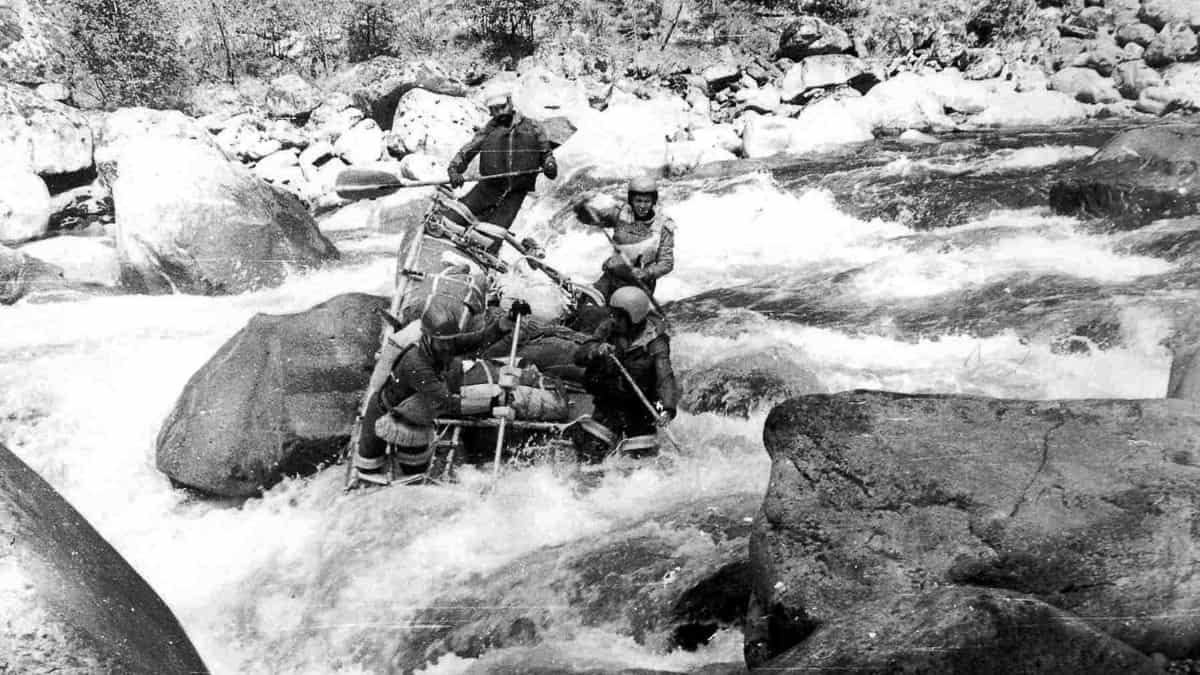
Rubicon Rapid on the Khara Murin
The next day we built a frame for our catamarans, the water dropped and we began our run. Our group had two cats – 4-person and 2-person. The Khara Murin with its abundance of rocks in the riverbed and transparent water reminds me of Cherry Creek (to be honest it does not have as big drops). For Boris and me it was special fun to have slalom on our small 10ft long cat. The 4-person cat had more problems and regularly sat on the rocks. The river runs through dense taiga between the green ridges of South Baikal. There are 124 rapids along this route and thanks to our lack of responsibility, our cat flipped in the last rapid.
The 60 km (about40 mi) run took 5 days. We stopped before the settlement Murino on the Baikal shore. We picked up some food that we left at the railway station to make our backpacks lighter and began our second 80 km (50mi) hike to the river Snezhnaya (Snowy).
It began with very deep and cold ford and then led across three passes to put in. The hike took 5 days. The Snezhnaya river met us with very high water but after day or two it began to decrease. It is very typical for this region. Snezhnaya is very different from our previous river. It is less technical but has big waves and drops. We portaged the waterfall “Leaping squirrel” – it is a problem to leap like squirrels on catamarans. In 6 days, after a bunch of very exciting rapids below the waterfall we finished our Siberian trip in the village Vydrino, took a train for 3-4 hour run to Irkutsk city. Here I said good bye to my friends. They flew to Kharkov and Riga and I took train to Tashkent to catch with my group for the Pamir trip.
Central Asian train are very special fun. I would recommend flying but it is more expensive of course. During four days, landscapes behind windows change from endless taiga to a desert, and the animals change from brown bears (just kidding- they were hiding in the forest) to camels. Temperature increased to a pretty high 42 C,(107-108 F) without AC. Eventually I arrived in Tashkent and had a smooth tram ride to the airport. Like always, I had to battle for a ticket, got one and left Tashkent to the Kyrgyzstan city Osh in an almost empty plane. It is a reality of Soviet Central Asian republics.
Osh is ancient city. It was important site on famous Silk Road. Now it famous with its bazaar and farmers market, which is one of largest in Central Asia. It very exotic place for westerners. “Mountains” of melons and watermelon, noise, unusual music, people dressed in national clothes, smells, amazingly tasty street food. It is the center of the city life. Also, Osh was place where caravans formed, and they were leaving both to the West and East. Currently, Caravans of trucks to Khorog, border guards garrisons, small kishlaks (villages) in Tajikistan start their way from here. The road – so called Pamir trakt (M41) is one of the highest highways in the world. In 1987 it was in pretty good condition along all 310km (almost 200mi). Maybe it was result of Afgan war – Soviet troops still were in Afganistan.
In Osh I met my group from Riga. We began to plan this trip in winter. Usually rivers in Pamir are runnable only in the fall. All of them have their source in the huge Pamir glaciers and in summer the water is too high to run them. So high that a summer run is suicidal, which was not in our plans. We chose the river Shakhdara, with it flowing very close to the south border of Tajikistan, does not have too much water and has a road along it. We formed our group from two parts. One part should run the river, the second part – we called it “bank support” – should assist us from the road- take care of campsites, photo, communication with locals, etc.
To my amazement everyone arrived to Osh in time. They even did not forget anything. Of course we found drivers in bazaar chajhana (tea house). They sat on the rug with bunch of “aksakals" (old bearded men) with pialas (china cup without handle) with green tea in hands and relaxed before the long road. We talked to some of them and very soon found several agreed to take us with them. It looked that drivers were happy to take us. Probably they were glad to have somebody in their cab to talk to on the long, difficult road. They told us where to find them the next day. Very early the next morning we found them with their trucks – famous blue-white Zil-130s. Drivers proudly told that it is the only truck able to take on high altitude passes. We split our group between 8 or 9 trucks and left Osh. Till Sary-Tash the road looked pretty nice. It crossed Alay Valley with its spacious meadows. We stopped a couple of times near yurts of shepherds and the owners invite us and our driver for piala of tea. We even did not notice our first pass. It was Taldyk pass with altitude only 3615m (approx 11,500ft). After Sary-Tash the road entered mountainous area. Actually, we still went among spacious flat meadows but now they were dotted with cone-like “hills”. Some of them were covered with snow and ice. Our driver told us that ice appeared here only at altitude above 5000m. They certainly did not look so high. Near very large Karakul’ Lake we were very close to China border.
We again stopped at border guard post surrounded with pretty high wall. The officer invited us in and offered some food and tea. Hospitality to visitors is a law here. We entered Tajikistan and a truck climbed to the highest pass on our way. The Ak-Bajtal pass has an altitude of 4655m – almost 15,000ft. At a saddle point on the road side we saw a couple burnt tanks on trailers – a reminder that war is very close. The rest of our caravan was somewhere behind us and now our truck was the only vehicle in this endless high altitude desert surrounded with white mountain ridges. After Sary-Tash we saw very few settlements – they looked similar to some Nevada mining towns.
We came to our put-in on Shakhdara at twilight. The campsite was in darkness and only the ice pyramids of Karl Marx peak (6723m) across the river had sunlight on it. On altitude above 3200m night was very cold. We immediately began to look for fuel for the camp fire. Nothing but wilted grass grew around. No any hope for wood. In a couple hours the entire group was together and everyone began to look for dry cow droppings. It was our fuel for this and next few days. Despite the smell it worked well enough and we cooked and warmed up around this fire.
Early the next morning I decided to run downstream to see the river. A flat grassy shelf was ideal for a run. I left behind the ruins of ancient fortress Dzhavshangoz and ran but not for long time. In a couple hundred meters I became super dizzy and laid down. I thought that I was dying. There was not any oxygen in the air. In an hours I came back and found my friends working on assembling cat’s frames. Here I found that some of guys did not feel well in the altitude above 4000m. The toll guys weren't doing any physical work and they vomited and felt very weak.
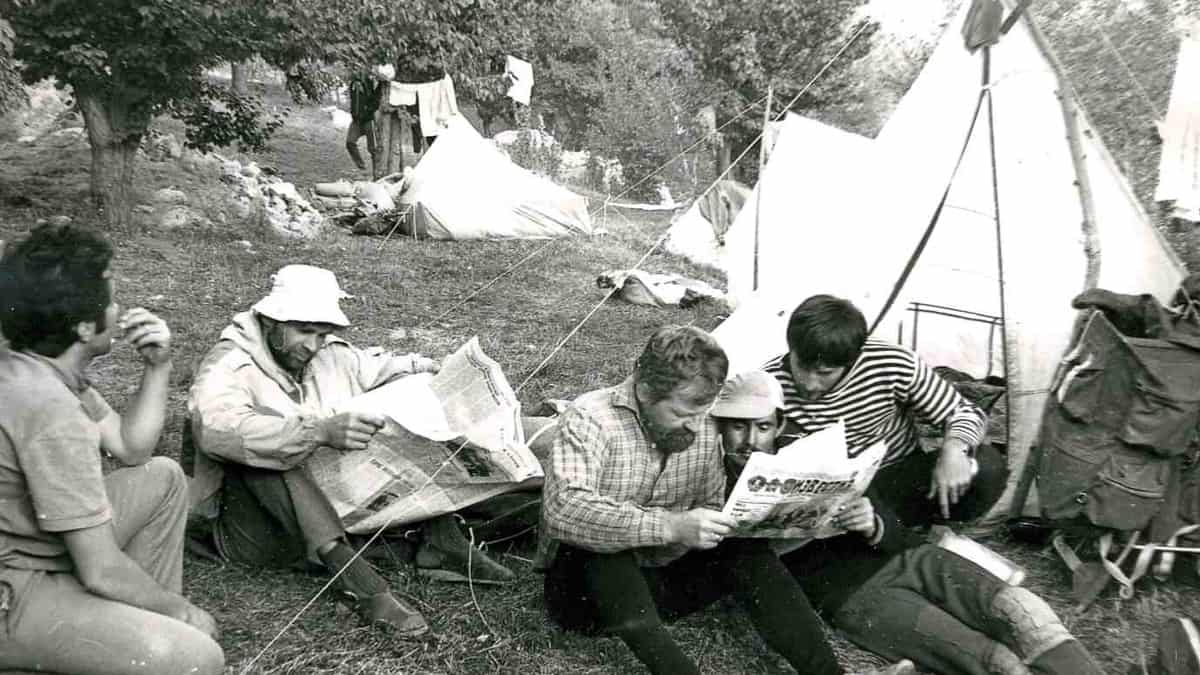
Camping on the Shakdara
On next day we began our run. The bank support group went downstream to look for the next campsite, and three cats slowly floated. The river did not have any significant rapids but the water was ice cold. In 2 hours we passed the first kishlak which looked unpopulated from the river. One hour more and above a small rapid there is a hot sulfur spring with a hot pool just downstream of it. Of course we did not miss such an opportunity to warm our bones. On the third day we stopped at pebble bar before Kishlak Sezhd and the canyon with the same name. A quick look was enough to start our first portage. The first part of the canyon was a very steep (250-300ft/mi) section followed by two or three vertical waterfalls (10-15ft). Certainly this section was not for cats or rafts. Maybe it is passable for a very good kayaker. The portage was simple but a bit humiliating - we carried our vessels along the road through the kishlak surrounded by crowd of excited kids. We put the cats on water just below the waterfalls and in less than an hour we stopped at the only good rapid on Shakhdara.
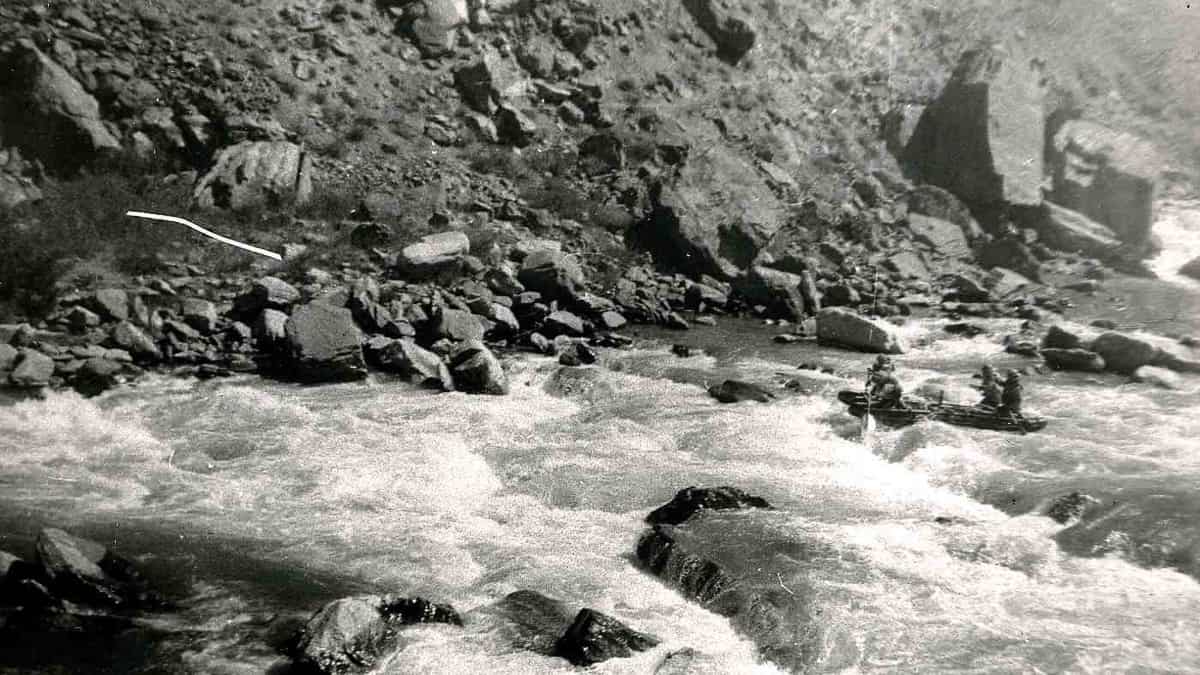
Russian Catamaran on the Shakdara
Almost all rapids of Shakhdara are located in cascades – a series of hard rapids practically with no pools between them. Shakhrez rapid is lucky exception. There is flat water before and after it. There is also a good site for a camp on the left side among high shrubs with a unique opportunity to find wood for fire. We had a layover day here, rested and ran the rapid several times. I did it three or four times both on cat-2 (with two flips) and cat-4. Flips in Shakhrez are relatively safe as there is flat water below. Downstream of Shakhrez the river became much harder. One cascade of class 5-6 rapids follow each other. There are almost no good spots for a camp and we ran these cascades using base camps with permission of locals to put-in in their gardens. Local Tajiks were very friendly (nobody in this time was affected this Islamic craziness. People often invited us in their homes for some tea.)
Rapids were very hard and we moved through them very slowly and provided as much safety as possible both from the banks and water. Every morning we walked to our boats like going to a work place. Immediately a bunch of locals appeared on the banks and observed our runs with big interest. Running cascade “Bediz” rapids we had a chance for a 20km hike to a lapis lazuli mine located at the altitude 5000m. The great award to our hike was a breath taking away view to mountain ranges in four countries USSR, India, Afganistan and Pakistan.
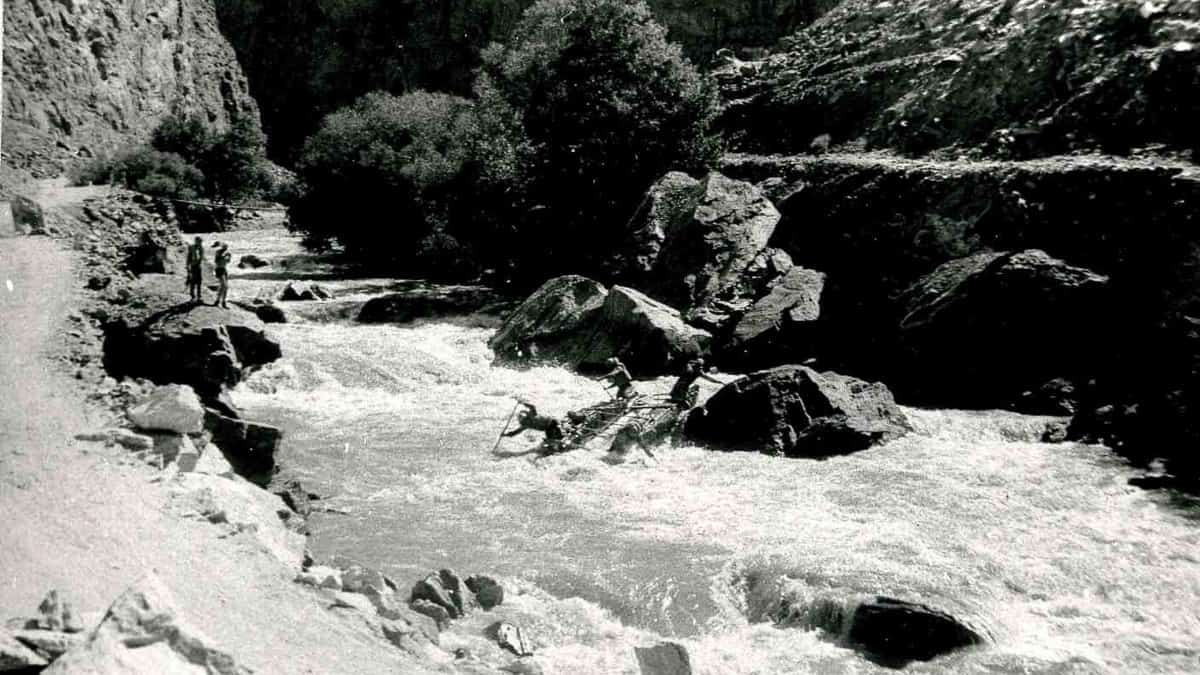
Rapids on the Shakdara
The rapids became more and more difficult. Some of them I would call clearly unpleasant. There were stories of locals about rafters who died in these rapids, or a just look at a class 5 rapid where whole river pressed hard onto vertical wall of high cliff on the left with clearly visible “mazar” (graveyard) on the top. Still we ran it. Very slowly, but we were done with these almost 130 rapids in two weeks.
Our take-out camp was just on the opposite side to a Botany Garden (the most high altitude botanical garden in the world) and bus stop. A couple of guys took bus to Horog city and very soon returned with famous GAZ-66 military truck, which took all of us to the Tajikistan capital Dushanbe.
But one more adventure awaited for us on highway above Pyandzh river not far from Horog. The highway twisted above the Pyandzh river. We did not see any signs of life on Afghanistan side, but driver angrily told us: "Wait, at night all of them will be here" "Who? Mujahidins?" "No, just Afghan villagers - all of them will try to cross the river and steal something: a donkey, chickens, even bed sheets hung on a rope outside of houses…" We calmed down a little bit, because it seemed did not carry any physical threat to us. Our driver stopped at the border guards post and informed us that we will sleep right here on the highway’s asphalt. Guards told that "mujahidins may shoot you at night, your headlights are a great target. Do not use your flashlights as well!" We did not want to be a target and peacefully laid down right on the concrete highway asphalt. Everything was OK if you don't count the noise from soldier’s boots and their dogs claws. They walked back and forth every 15-20 minutes. In an hour, one of our guys decided to find something softer and calmer. He moved to the side of the highway, then we heard a terrible noise of falling body. It was clear that he kidnapped by Afghans, but nobody attempted to save him. At dawn we found him in good health in the first line of trenches. We pulled him out and in 6-7 hours reached Dushanbe and were back in civilization.
